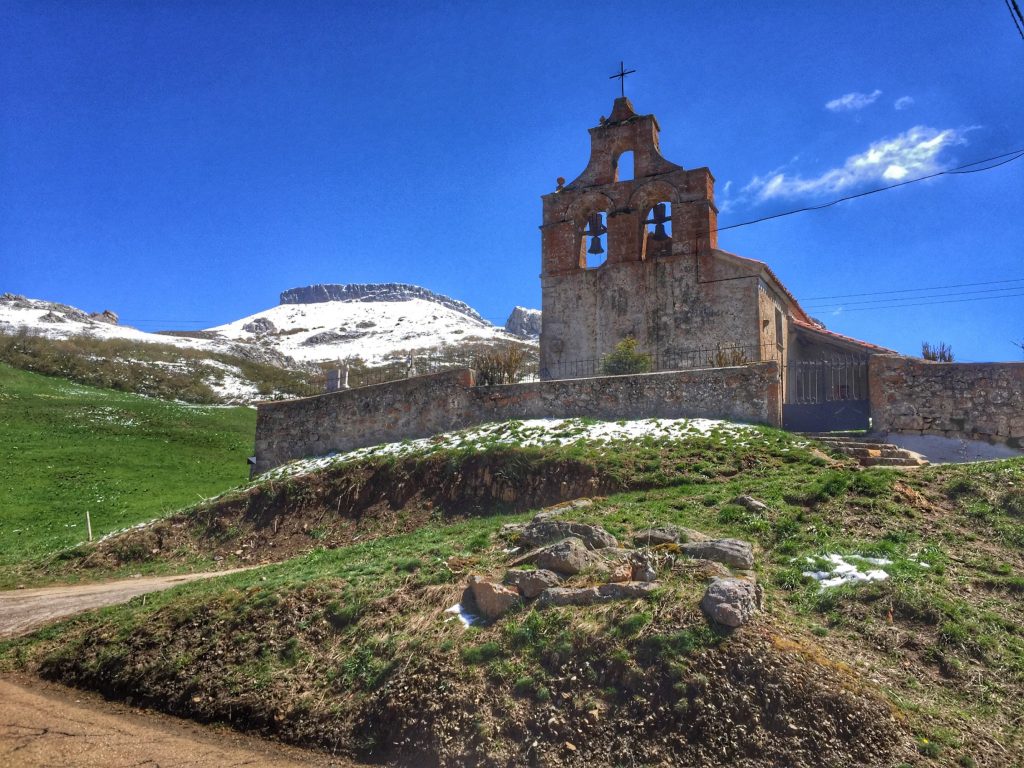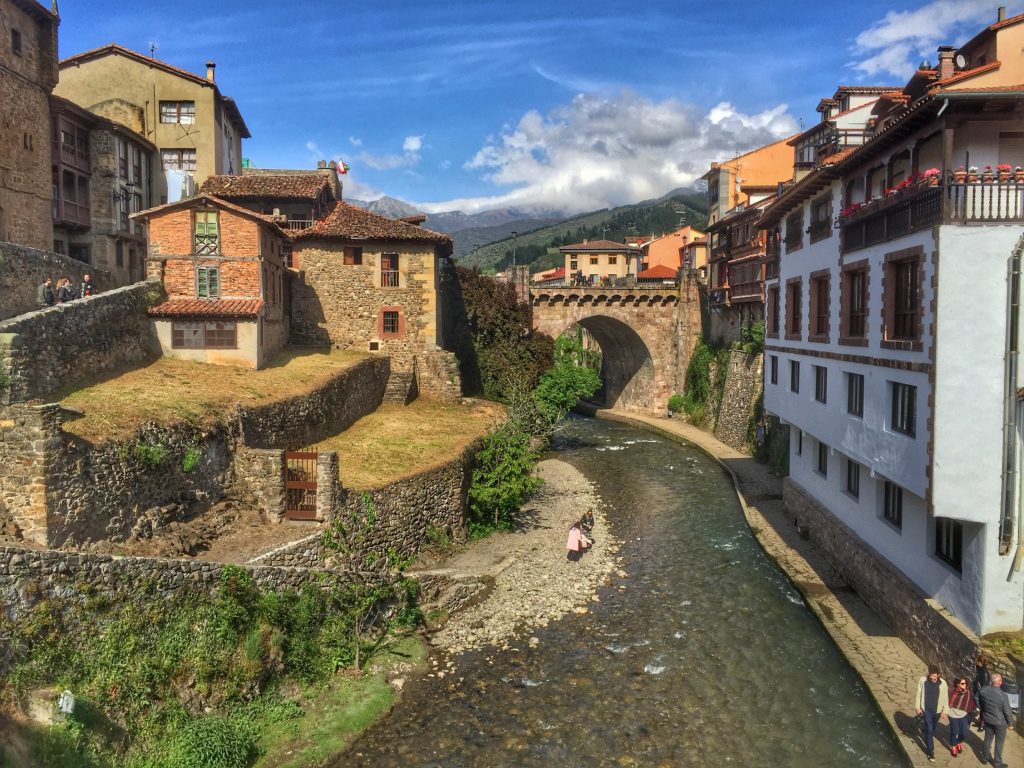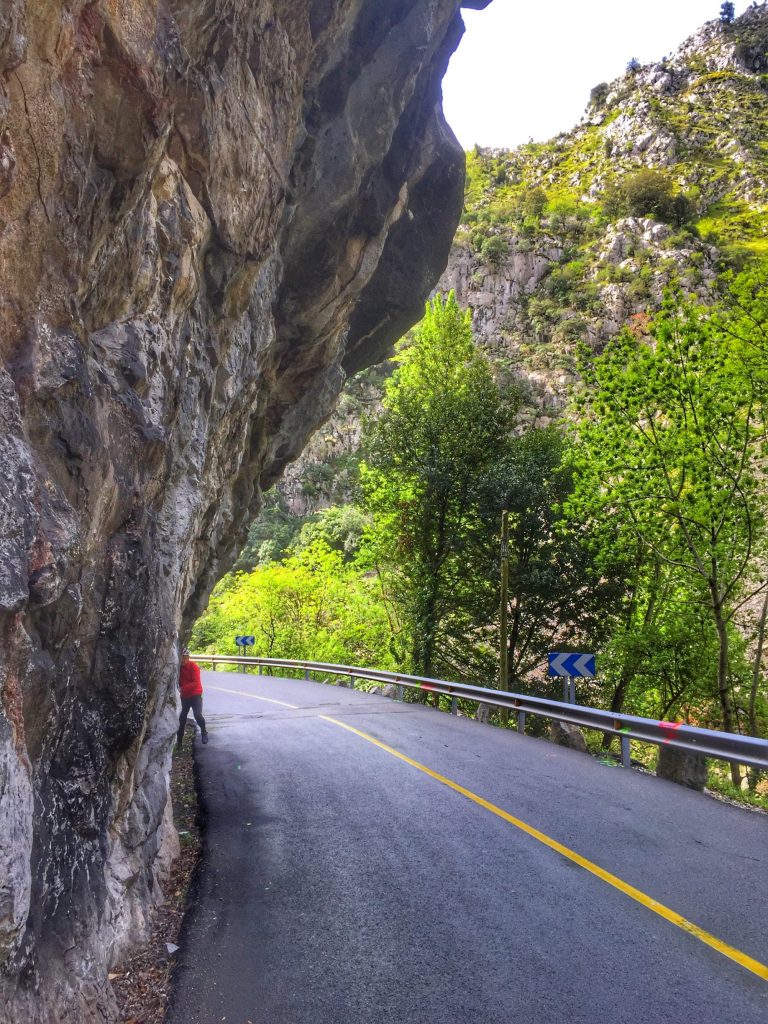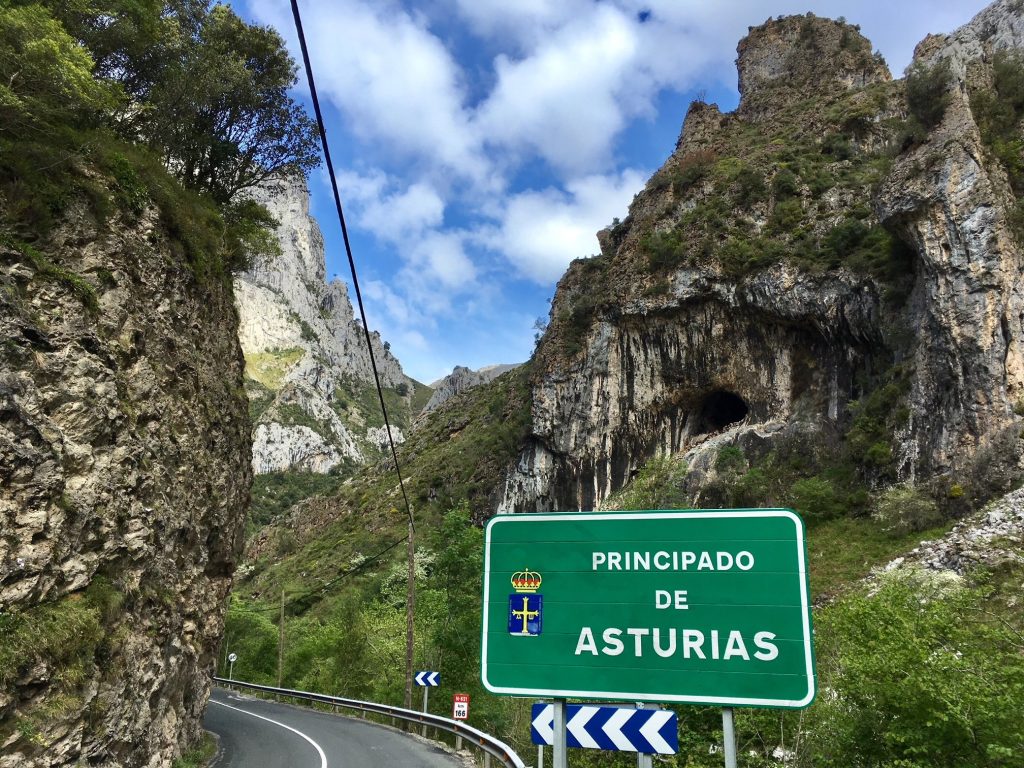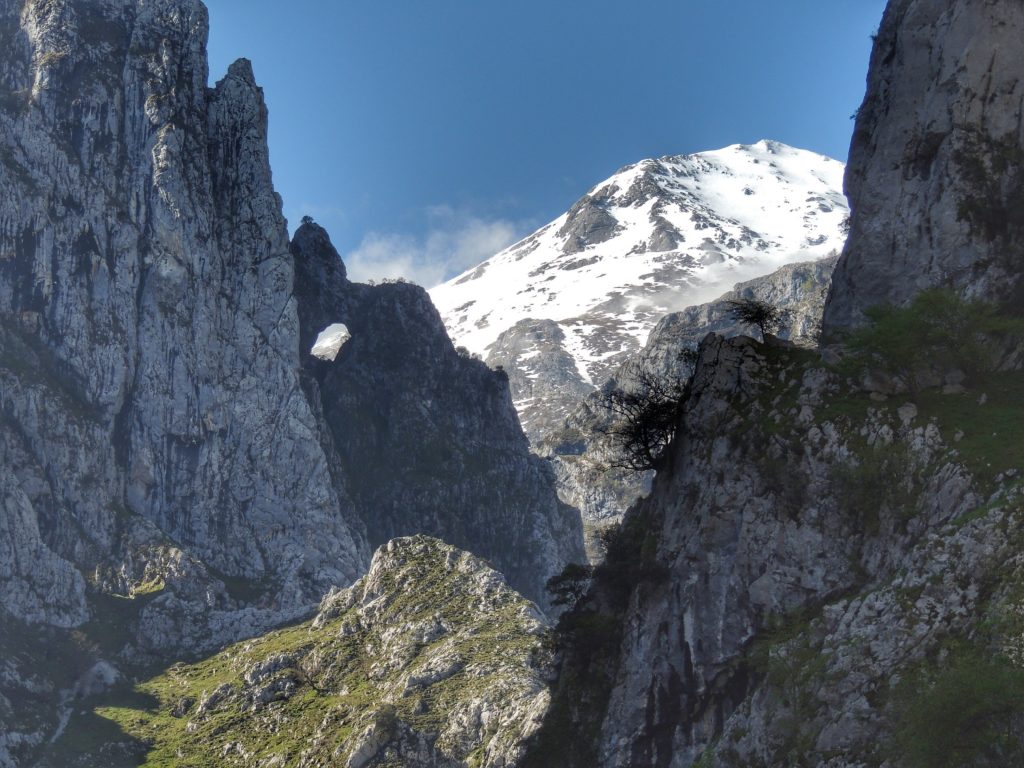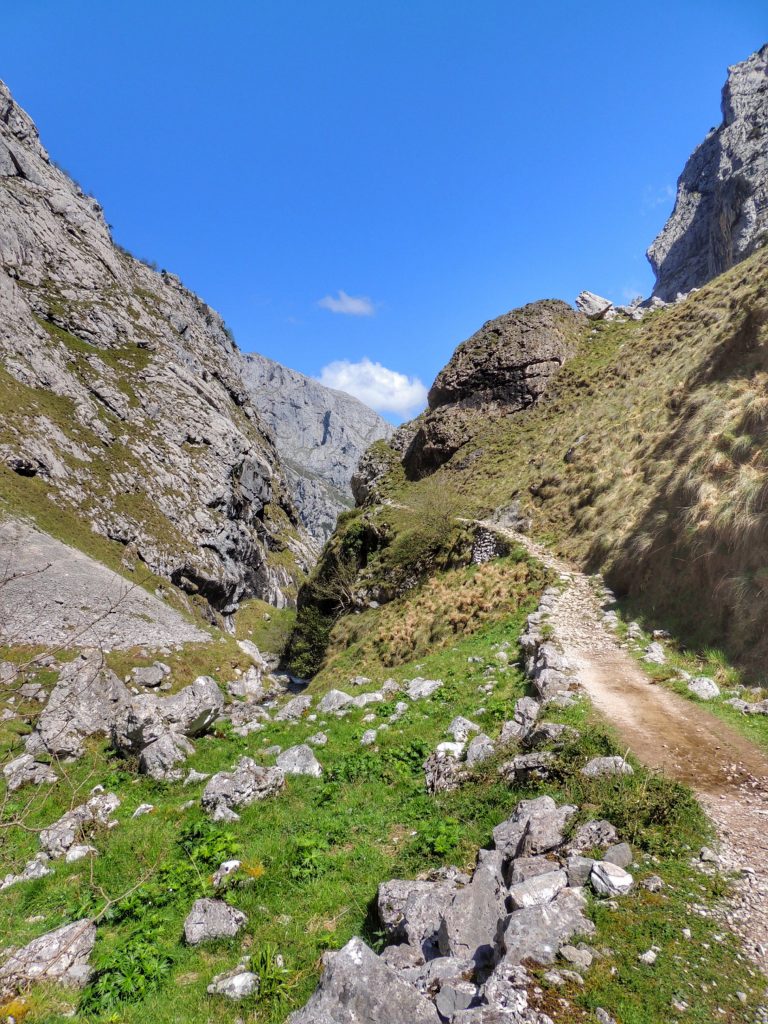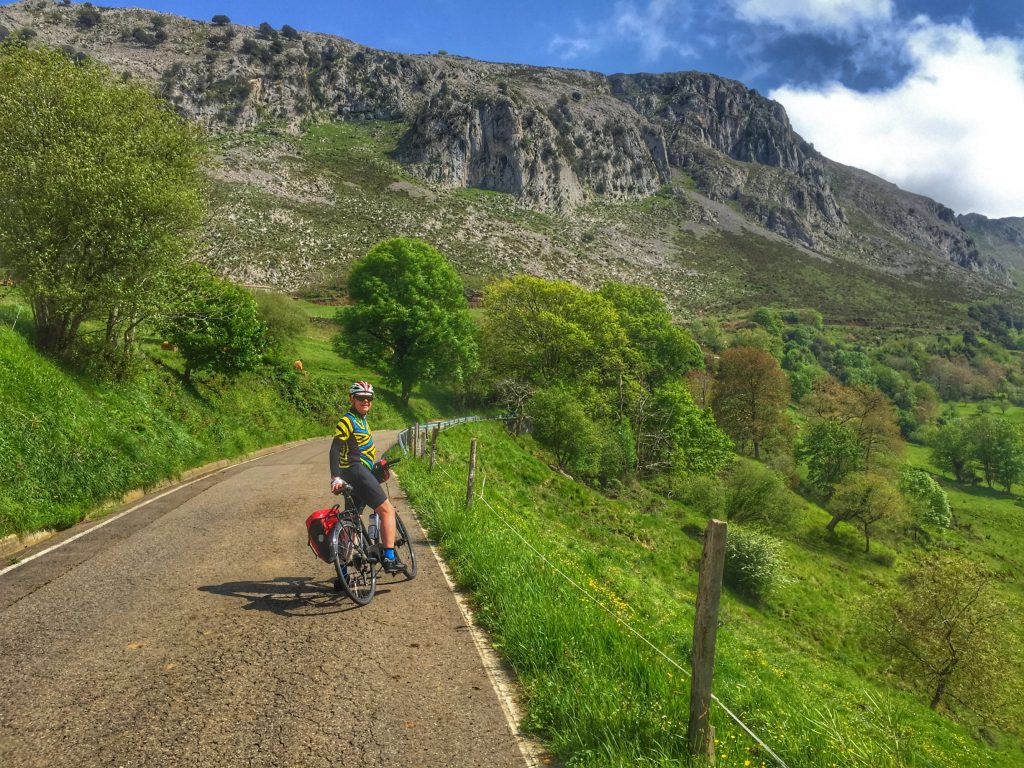One of the benefits of the TV coverage of grand tours is that they serve as three week-long adverts for tourism in the regions through which the races are run. Through such coverage, we’ve been introduced to some wonderfully scenic countryside across Europe, particularly the mountainous regions. We’ve often said “We must go there!”, and now, this May, we actually have.
The coverage in question was of the Vuelta a Espana passing through the Hermida gorge in the Picos de Europa mountain range in northern Spain, which we’d never heard of before. The views from the helicopter were jaw dropping, spurring us on to search for cycling holidays in the area. We found one such tour operated by Whereabouts Holidays (and run by Senderos y Pueblos on the ground).
First, we made our way to Santander by plane. Being a Sunday, the onwards transport was limited, so we had a 6 hour wait for the bus to our first hotel in Aguilar de Campoo. That turned out to be a good thing, as we had a chance to explore the city, which was a delight in the warm late April sunshine, and a great way to start our holiday.
The bus took us away from the coast to the high plains of Castile and Leon. We passed through several rain showers on the way and into much colder weather. Actually about 15 degrees C cooler than normal for the time of year.
After an overnight stay in a converted convent, we were met by the tour company and introduced to our bikes: heavy Giant Argento touring bikes, which were to become nicknamed “slow silver”. They were comfortable though, with plenty of carrying capacity (although our main luggage was transferred each day by taxi to our destination hotel).
It was barely above freezing that day, and by the time we reached our destination, the Parador at Cervera de Pisuerga, it was actually snowing! The hotel was amazing, with a vast room and a spectacular panoramic view of the mountains all around, including the Picos de Europa, which were our next destination.
The following day, despite a hard frost, we managed to avoid any ice on the roads as we rode up to about 4400 ft of elevation in bright but cold sunshine, before descending to the picturesque medieval town of Potes, in the region of Cantabria at the southern end of the Picos range.
Our third day of cycling took us on a return trip up to the very foot of the mountains at Fuente De, where there is a cable car that can transport you even higher for the best possible views. However, the cable car was down for maintenance when we finally got there. That wasn’t actually a problem, as the view was obscured behind cloud by the time we got there, and besides, there was NO WAY that Colette was going up in one of those things!
That brings us to day four of cycling, and the trip from Potes to Arenas, passing through the Hermida gorge. We travelled north from Potes on the N-621 and after only a few miles, we began to enter a deep gorge between the mountains. This chasm in the limestone rock was presumably carved out by the River Deva, which runs alongside the road.
The road twisted and turned, with towering vertical cliffs running with water to one side and the river to the other. It was also quite narrow for the most part, and fairly busy with traffic, so it was only safe to stop for photos in a quite limited number of locations. But we took pretty much every chance we could, using the kickstands to keep the bikes upright as we took pictures.
On one such stop, the bikes toppled over – the kickstand wasn’t infallible – and Colette picked hers up to carry on. I followed a short distance behind, then after rounding a sharp bend, had to stop suddenly when I found Colette’s pannier bag lying in the middle of the road. It must have been dislodged during the earlier bike toppling incident.
It was a worry, as any car coming round the corner would run the bag over before being able to stop. I grabbed the bag and as I did so, I noticed a small cave / refuge cut into the rock face, into which I was able to put my own bike. Then, I walked down to where Colette had propped her bike up against the cliff. After a bit of faffing, I managed to secure the bag back onto its rack, during which time luckily no cars had come past.
The problems came when trying to get back to my own bike. As I walked back, a procession of cars began to come fast round the corner. As it was a blind corner, they couldn’t risk going over the centre of the road, leaving barely a foot between them and the cliff face. I had to press myself hard up against the rock face to prevent being run over.
Then, once I was safe in the cave with my bike, I had to choose a time to emerge, not knowing whether it would be into oncoming traffic or not. Well, the fact that I’m writing this should give you a clue that I was successful in that gamble. So we were able to carry on, none the worse for the interlude, but pumping with adrenalin.
A while later, we reached the village of La Hermida, after which the gorge is named, and stopped for a coffee before carrying on. The gorge just kept on giving with the amazing views, and even though we were going downhill gradually, we weren’t tempted to ride quickly. Quite the opposite – we wanted it to last. In fact, if we hadn’t been riding such heavy bikes, we’d have been tempted to turn around and do it all over again!
As the ride progressed, we entered the Asturias region and the fun carried on. Then finally, after about 12 miles of gorge riding, the scenery opened up and flattened out, bringing us to the town of Panes, where we stopped for another cafe con leche.
Panes lies at the confluence of the rivers Deva and Cares, and on leaving the town, we crossed the Deva, leaving the N-621 behind and joining the quiet AS-114, which runs up alongside Rio Cares. This happens to be one of Spain’s premier salmon rivers, though we didn’t see anyone fishing.
We passed through open countryside for a time before it began to close in once more. Pretty soon, we were entering another gorge. It wasn’t as long or quite as spectacular as the Hermida gorge, but still amazing and forced us to stop for more photos.
Eventually, the gorge opened up as we closed in on our destination: Arenas de Cabrales, and Hotel Picos de Europa. The staff were very attentive and whisked our bikes away for safe keeping. Then, due to Spain’s strange meal timings, we still had time to get showered and changed then go downstairs to the restaurant for a mid-afternoon lunch. Superb food it was – three courses (four if you include the pate and bread at the start) of hearty Asturian cooking with a bottle of wine for little more than we’d pay for a panini and cup of coffee at home.
After that, we still had two more days of cycling left. The first of those was a trip to the heart of the mountains, including being transported by funicular to the preserved traditional village of Bulnes, followed by a terrifying walk back along the side of a ravine which was the villagers’ traditional route out of the mountains before the advent of the funicular.
Finally, we had another picturesque cycle through alpine-like meadows in lovely sunshine, including two stiff climbs before a long, twisty-turny, hairpinny descent brought us to the bustling seaside town of Llanes, which was the last stop on our cycle tour.
So that was it in a nutshell. The tour that was dubbed “from the mountains to the sea” had finished. It could just as easily have been called “from winter to summer”, as we were basking in glorious sunshine now at the end, remembering the near hypothermic conditions on day 1. We will take away many more lovely memories of northern Spain, and we can’t wait for another chance to come back.


